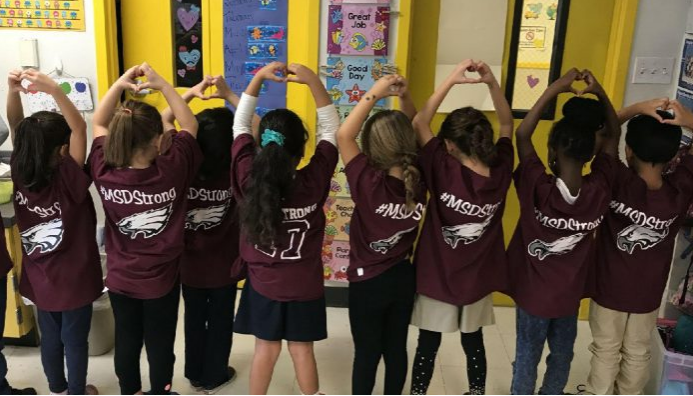
Editor’s note: This commentary from Amber M. Northern, senior vice president for research at the Thomas B. Fordham Institute, and Nathaniel Grossman, an editorial and program associate at Fordham, written expressly for reimgainED, explores the myths and misperceptions about charter schools.
More than two years ago, a Florida newspaper editorial board made two incriminatory claims: “Charter school companies feast at the public trough,” and “There’s no consensus on whether charters are doing as well, better, or worse than the traditional model in educating children.”
That would be a big deal, if true. Florida has over 600 publicly-funded charter schools, so it’s imperative that parents, students, educators, and the larger public know whether these claims have merit. However, research conducted in the last several years says otherwise—and it’s a problem that these misconceptions continue to fester.
Let’s first clarify the term “charter school companies.” Like those nationwide, public charter schools in Florida are governed and regulated by public agencies and must operate as non-profit organizations run by their own boards. Those boards may—and many do—opt to enter into contracts with for-profit or non-profit management organizations that provide specific services for one or more schools.
This is done in the interests of quality and efficiency, just as traditional public schools obtain various administrative and academic supports—payroll, accounting, hiring, and so on—from their central offices, and everything from cafeteria food to teacher professional development from outside vendors. Charter schools that enter into contracts with for-profit organizations are often wrongly referred to as “for-profit charters,” despite the fact that they are non-profit schools.
Let’s now turn to the claim that these organizations are “feasting at the public trough.” Make no mistake, fiscal impropriety exists in every school sector—both traditional and charter—and it’s obviously unacceptable. But no one has access to the internal budgets or earnings reports of the for-profit organizations contracted to help schools in the Sunshine State. Moreover, we’re not opposed to reasonable levels of transparency (versus trying to overregulate the sector out of existence), including public reporting of data pertaining to expenditures and profits. But until we have that—in the traditional school sector, too, we might add—accusations of profiteering in Florida’s charter schools are simply unfounded.
What we do know, however, is that public charter schools typically educate students for less money than traditional district schools. For example, in Florida, charter schools received an average of $6,500–$7,400 per student in the 2019–2020 school year, below the average of $7,672 for traditional schools. We also know that so-called “for-profit charter schools” in Florida that belong to a network spend 11 percent less than schools with non-profit management organizations, and do so without cutting expenses on instruction.
A recent study published by our organization, the Thomas B. Fordham Institute, likewise found that charter schools in Ohio that outsource work to for-profit entities tend to spend more money on classroom instruction than traditional public schools. In other words, they receive less public funding but keep dollars where they belong: in the classroom.
This leads to the second dubious claim that there’s “no consensus” on the effectiveness of charter schools. The Fordham study mentioned above also found that both non-profit and for-profit charter schools tend to outperform traditional public schools, even with less funding per student. Furthermore, a study by the National Bureau of Economic Research found that attending a school operated by the National Heritage Academy, the fourth-largest for-profit charter network in the nation, is associated with higher student achievement in math.
As for Florida, a 2017 Stanford University study praised its hybrid schools—in which a charter management organization chooses the school operator—for their “exceptional success” in driving student achievement in math and reading. Across the 26 jurisdictions in the study, Hispanic students who attended hybrid charter schools gained what amounted to 74 additional days of math growth and 63 additional days of reading growth per year over similar peers who attended traditional public schools. As explained in the study, these large effects were driven “primarily by the exceptional success of the Hybrid schools in Florida and Michigan.”
What’s more, the benefits of charters aren’t limited to the students that they enroll. At least a dozen rigorous academic studies have now shown that competition from charters has positive effects on the academic achievement of students who remain in traditional schools. In fact, another recent Fordham study found that these effects are so profound and broadly shared that they benefit entire metropolitan areas, especially those students who are low-income, Black, and Hispanic. Still another study we recently released showed that teachers in charter schools tend to have higher expectations for students than do their counterparts in traditional public schools, which research shows can lead to a host of improved outcomes for students, including greater high school graduation and college completion rates.
Every school has room to improve, and that certainly includes the charters that partner with for-profit companies for services. But on average, the evidence leads us to believe that public charter schools—in all their forms—can be beneficial to students. So try to keep an open mind when you hear about that popular misnomer otherwise known as for-profit charter schools.


